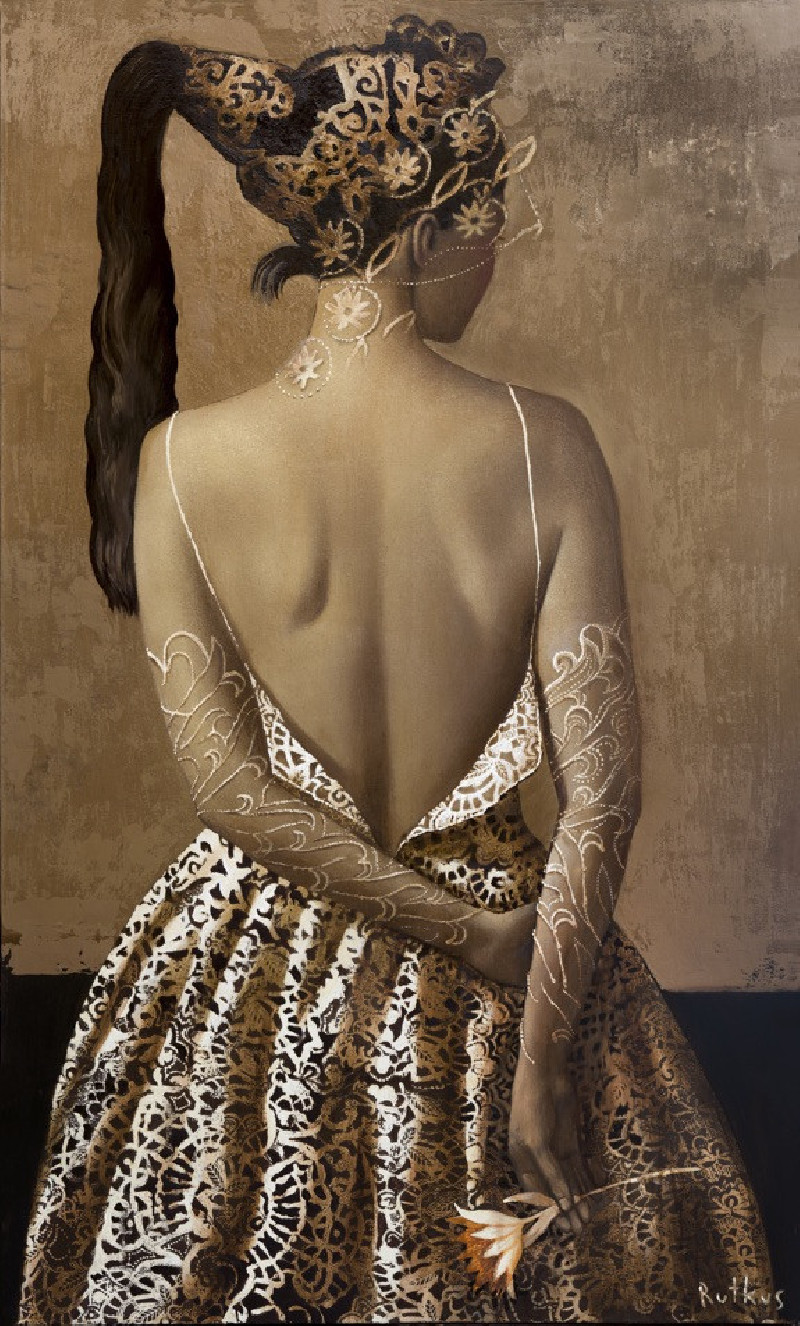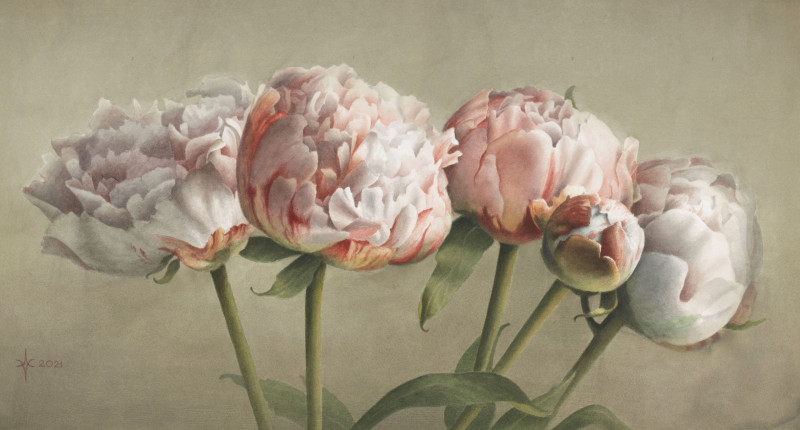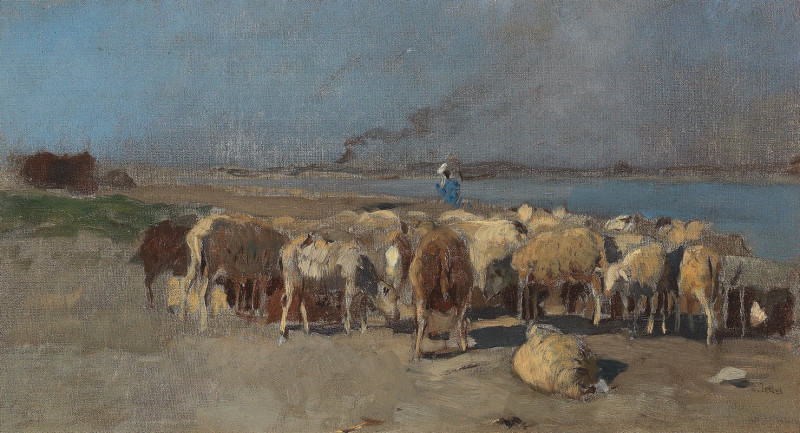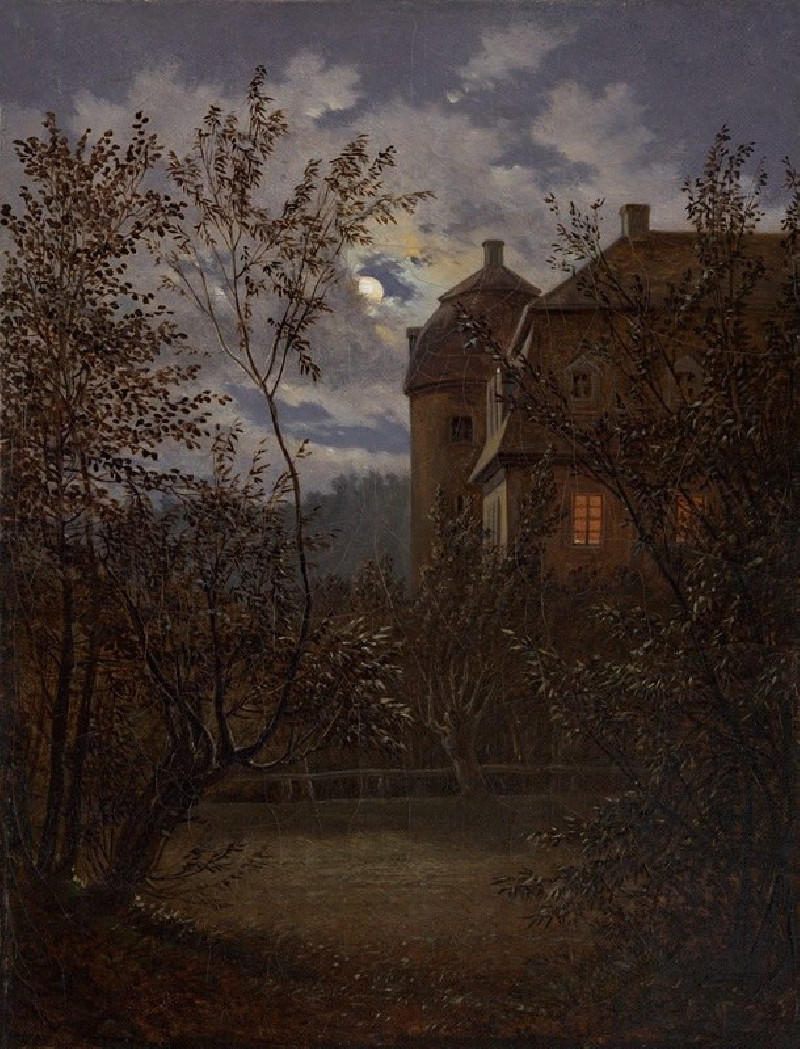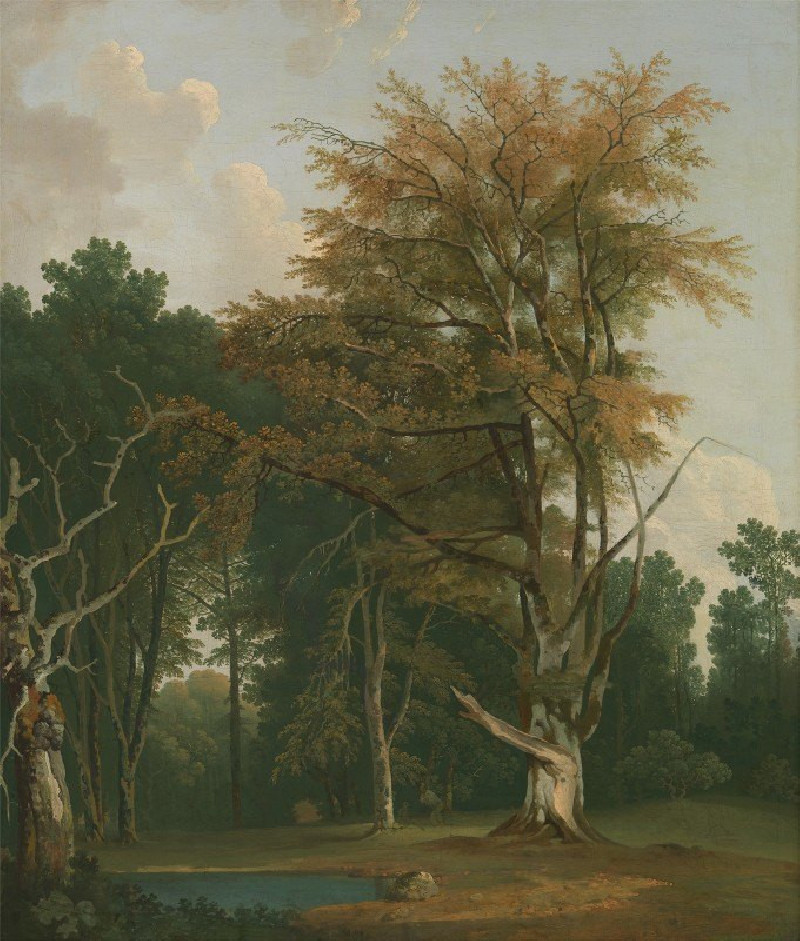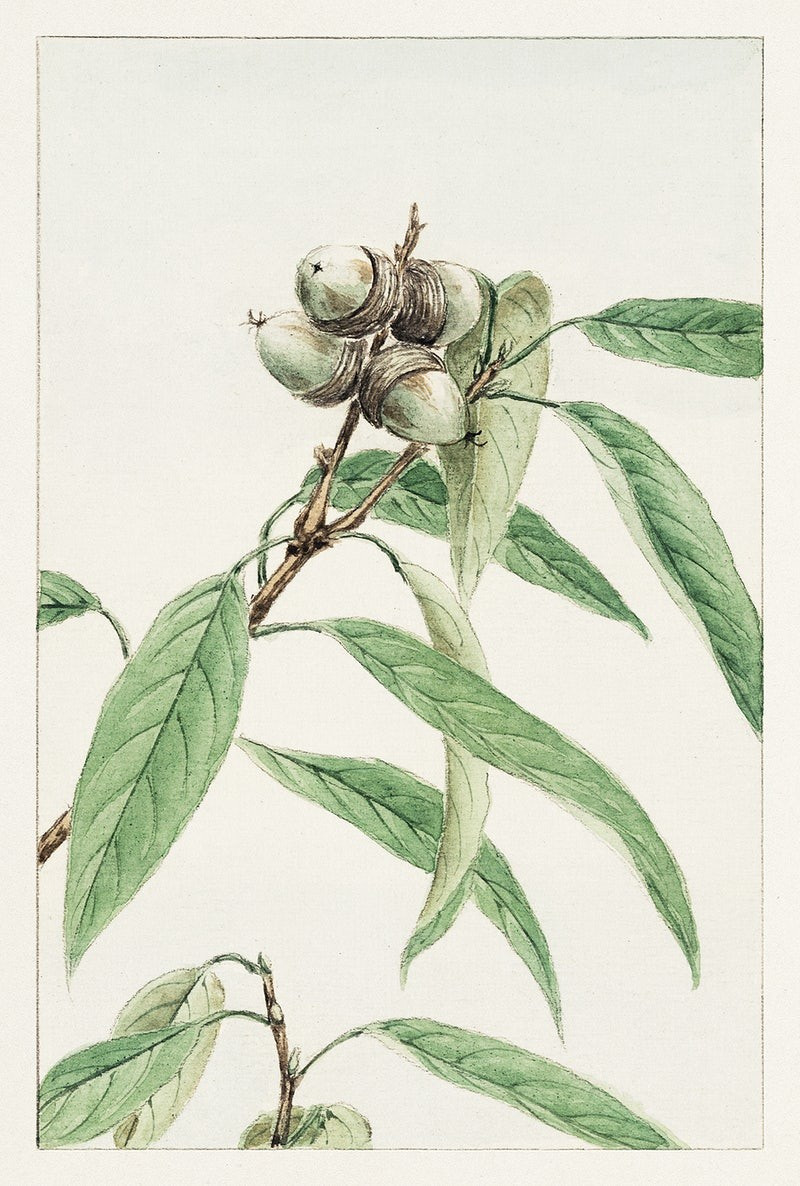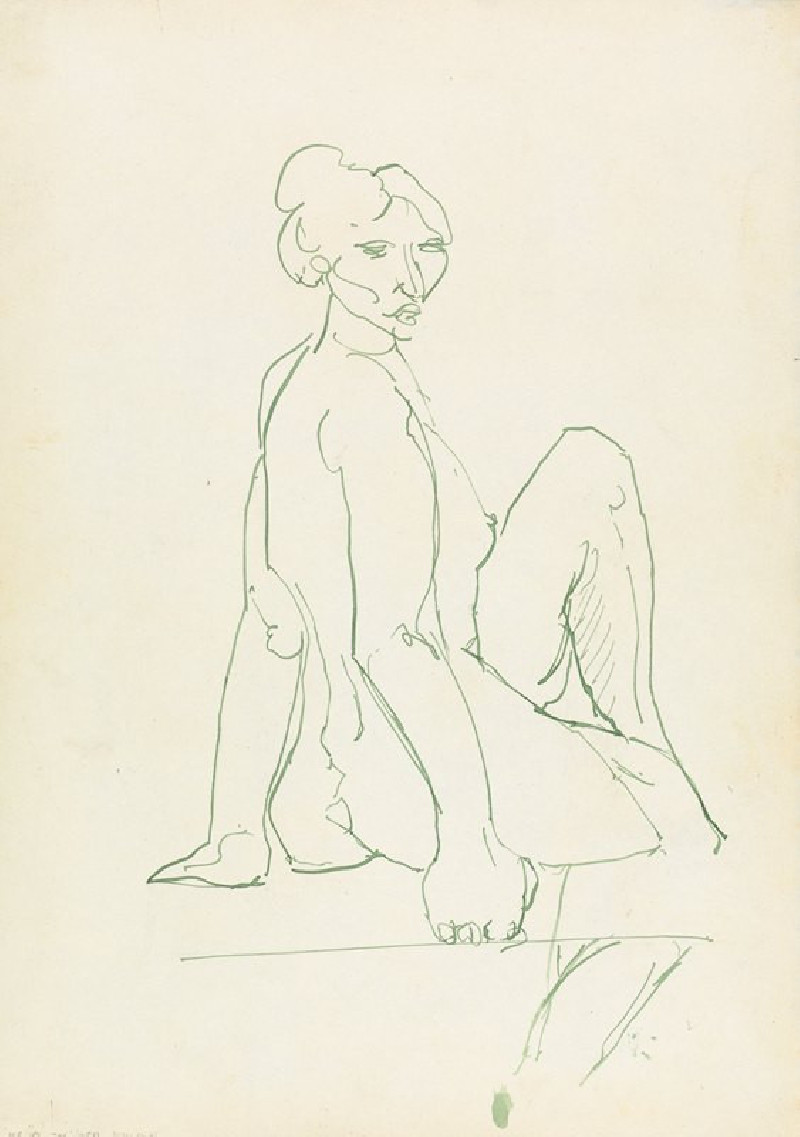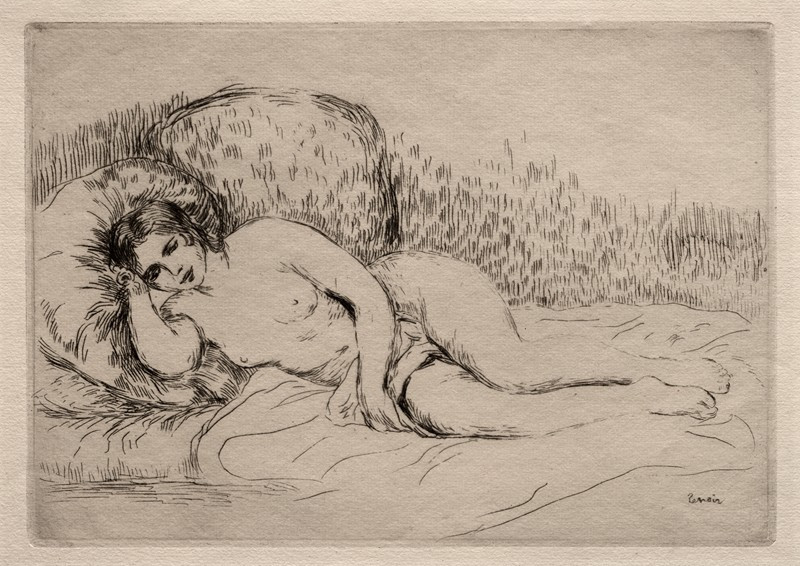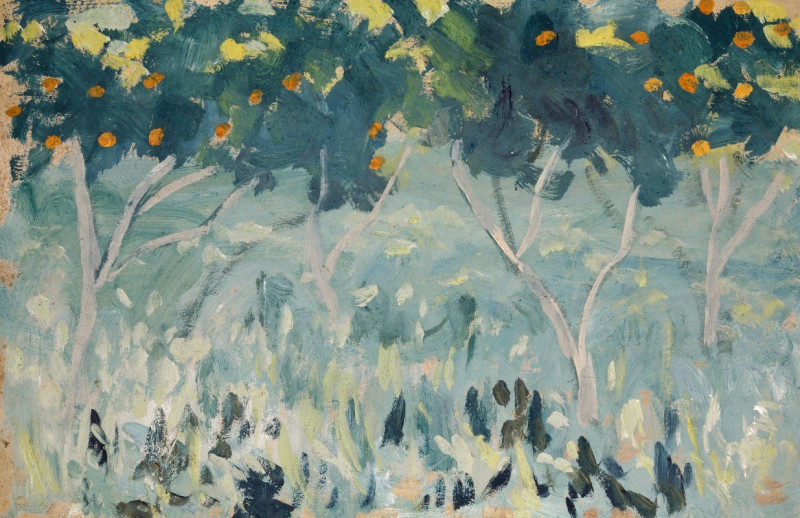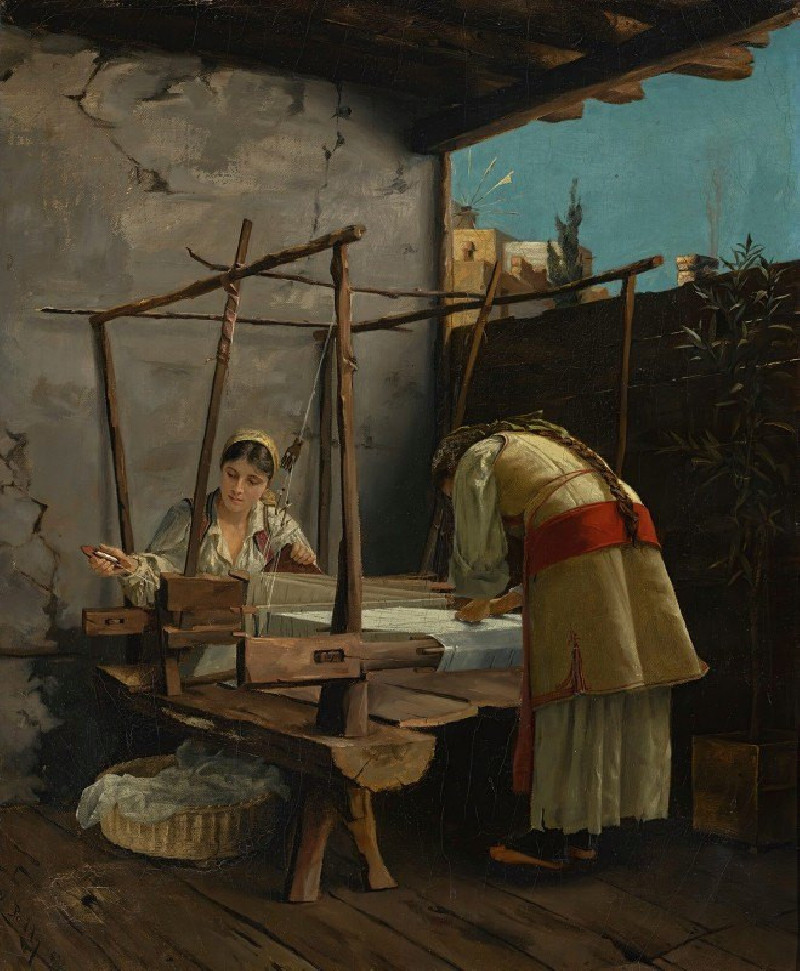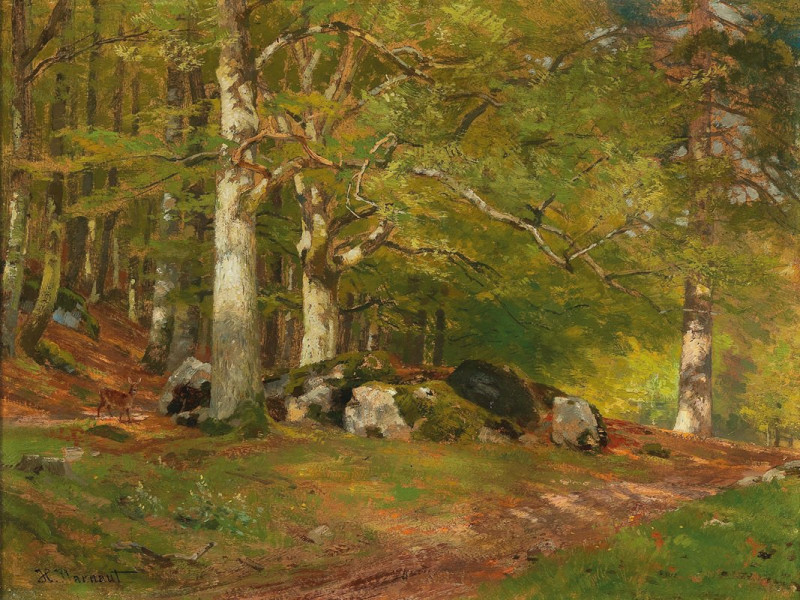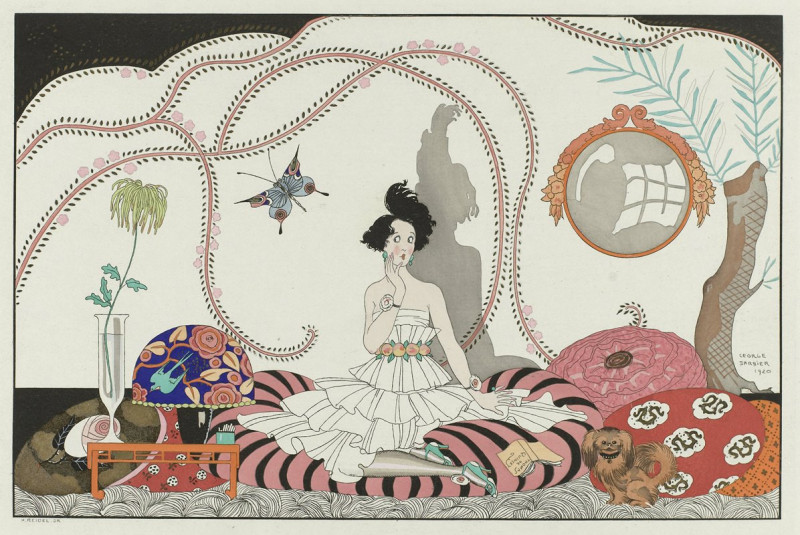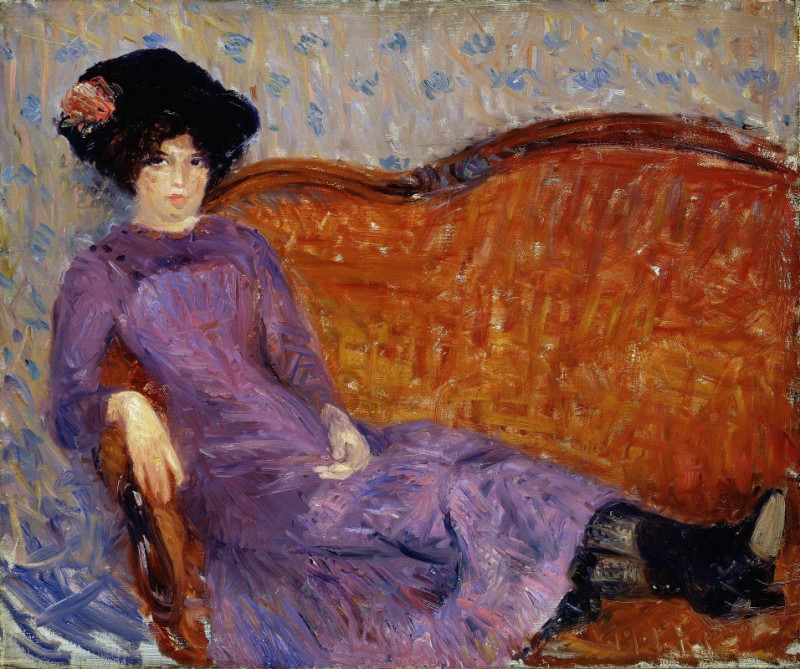Acker und Häuser im Erzgebirge (1906)
Technique: Giclée quality print
Recommended by our customers
More about this artwork
The evocative piece "Acker und Häuser im Erzgebirge" by Ernst Ludwig Kirchner, created in 1906, portrays a striking, rhythmically textured landscape. This etching captures the rustic charm of fields and houses nestled within the Ore Mountains (Erzgebirge) in a style that bridges emotion and expression.At first glance, what captivates the viewer is Kirchner's use of dynamic, sketch-like strokes that sweep across the canvas, suggesting the wild, untamed nature of the landscape. The composition features undulating fields in the foreground, creating patterns that suggest the labor of ploughing and the organic richness of the earth. These fields curve around a central dark patch, drawing the eye inwards to a cluster of houses.The houses themselves appear quaint and somewhat clustered, bordered by a dense array of trees that stand as dark silhouettes against the sky. Behind this immediate scene, the background is dominated by the looming shapes of mountains, sketched with restless, almost aggressive lines. This not only conveys the rugged texture of the mountain terrain but also seems to echo the tumultuous sky above.Kirchner's work here is emblematic of his broader practice, which often explored the tension between the natural world and human habitation, expressing both harmony and conflict. The bold, stark black-and-white contrasts in this etching enhance its dramatic impact, emphasizing the interplay of light and shadow, and the elemental forces shaping the landscape.This painting invites viewers not merely to see a depiction of the Erzgebirge, but to feel the rugged beauty and enduring spirit of the land—a land that, despite the simple, almost fragile appearance of the dwellings it hosts, speaks of strength and resilience.
Delivery
Returns
Ernst Ludwig Kirchner (1880–1938) was one of the most important German Expressionist painters. He was a co-founder of Die Brücke, a group of German expressionist artists formed in Dresden in 1905. Die Brücke and Kirchner took inspiration from Vincent Van Gogh and Edvard Munch, as well as African and Oceanic art. They used woodblock printing as a medium to showcase their signature style: flat, unrealistic images with vivid colors. The recurring themes in Kirchner's artworks included exotic cultures, faraway landscapes, self-portraits, dancers and Berlin street life. His paintings and prints effectively portrayed non-European cultures despite the fact that he never traveled outside of Europe.
































